When businesses are transforming or facing growth challenges, choosing effective strategic planning methods and tools is essential for systematically analyzing and rethinking their strategy. This article introduces the classic SWOT analysis method and the professional Boardmix online whiteboard tool, which can help companies understand market opportunities, risks, strengths, and weaknesses. These tools also allow organizations to quickly identify potential advantages, foster strategic innovation, and enhance strategic competitiveness.
What is SWOT Analysis?
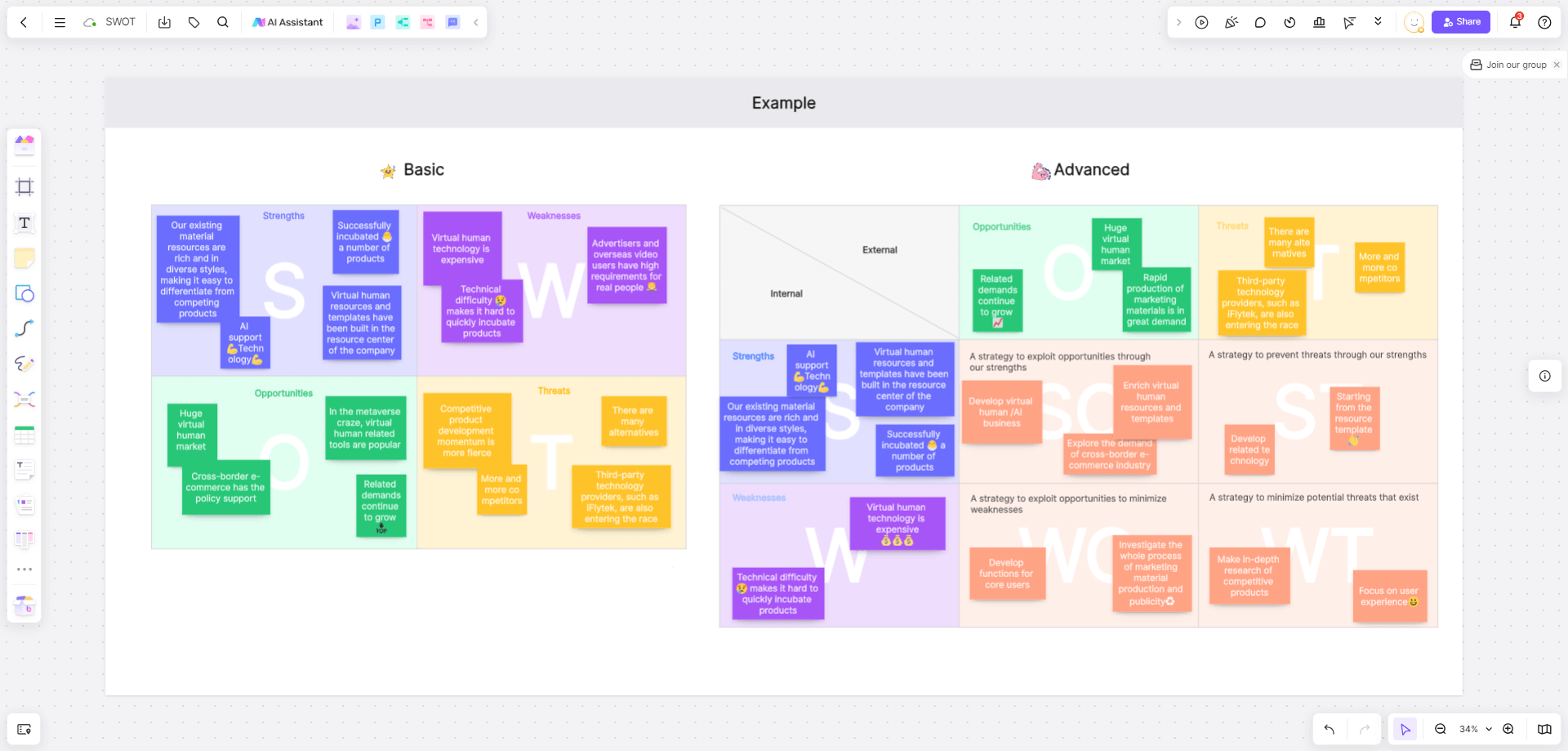
SWOT stands for Strengths, Weaknesses, Opportunities, and Threats. SWOT analysis, also known as situational analysis, arranges these four elements in a matrix format.
-S (Strengths): Represents a company's competitive advantage or unique strengths that set it apart from competitors.
-W (Weaknesses): The company’s disadvantages and shortcomings compared to competitors.
-O (Opportunities): Refers to external factors that can create opportunities for the company. By capitalizing on these opportunities, a company can gain a competitive edge.
-T (Threats): Indicates external risks. If these issues aren't addressed, they could erode a company's competitive position.
SWOT analysis is widely used in business planning and strategy development. It allows decision-makers to conduct a comprehensive, systematic, and accurate assessment of internal strengths and weaknesses, along with external opportunities and threats, to create effective strategic plans.
To quickly apply the SWOT analysis, you can use the Boardmix online whiteboard, which offers a variety of templates. Simply choose the "SWOT Analysis Template" to generate your SWOT template.
Role of the SWOT Analysis Model
The SWOT analysis model is widely used for business strategy and competitive analysis. Its systematic approach combines various independent factors for comprehensive analysis, leading to more complete and scientific strategic planning.
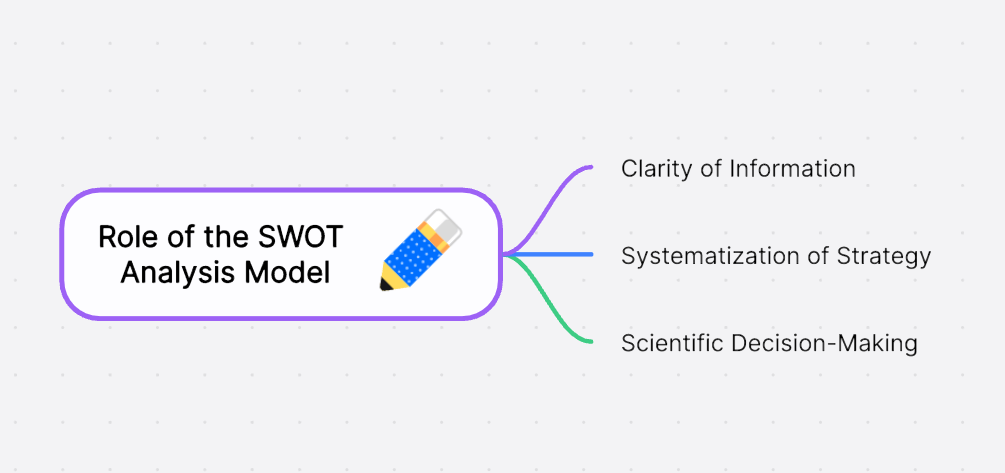
1. Clarity of Information
Businesses face increasingly complex market environments. Through SWOT analysis, decision-makers can reasonably plan by considering external changes and unique internal conditions. Listing a company's strengths, weaknesses, opportunities, and threats helps clarify complex information, allowing decision-makers to understand the current situation better and make more accurate decisions.
2. Systematization of Strategy
SWOT analysis helps companies build a SWOT matrix for comprehensive and accurate research, facilitating a systematic approach to both capturing opportunities and mitigating risks.
3. Scientific Decision-Making
SWOT analysis offers a straightforward method for decision-makers. By listing various aspects of S, W, O, and T, they can make informed judgments and draw convincing conclusions, even without precise data support.
How to Turn SWOT Analysis Results into Concrete Business Strategies
Next, we're diving into how to turn SWOT analysis results into actionable business strategies. Sounds pretty technical, right? Don’t worry, I’ll break it down step by step.
1. Clarify SWOT Analysis Results
First off, make sure your SWOT analysis results are clear and specific, and that they align with your company’s goals and vision. In simple terms, every key point should be easy to understand.
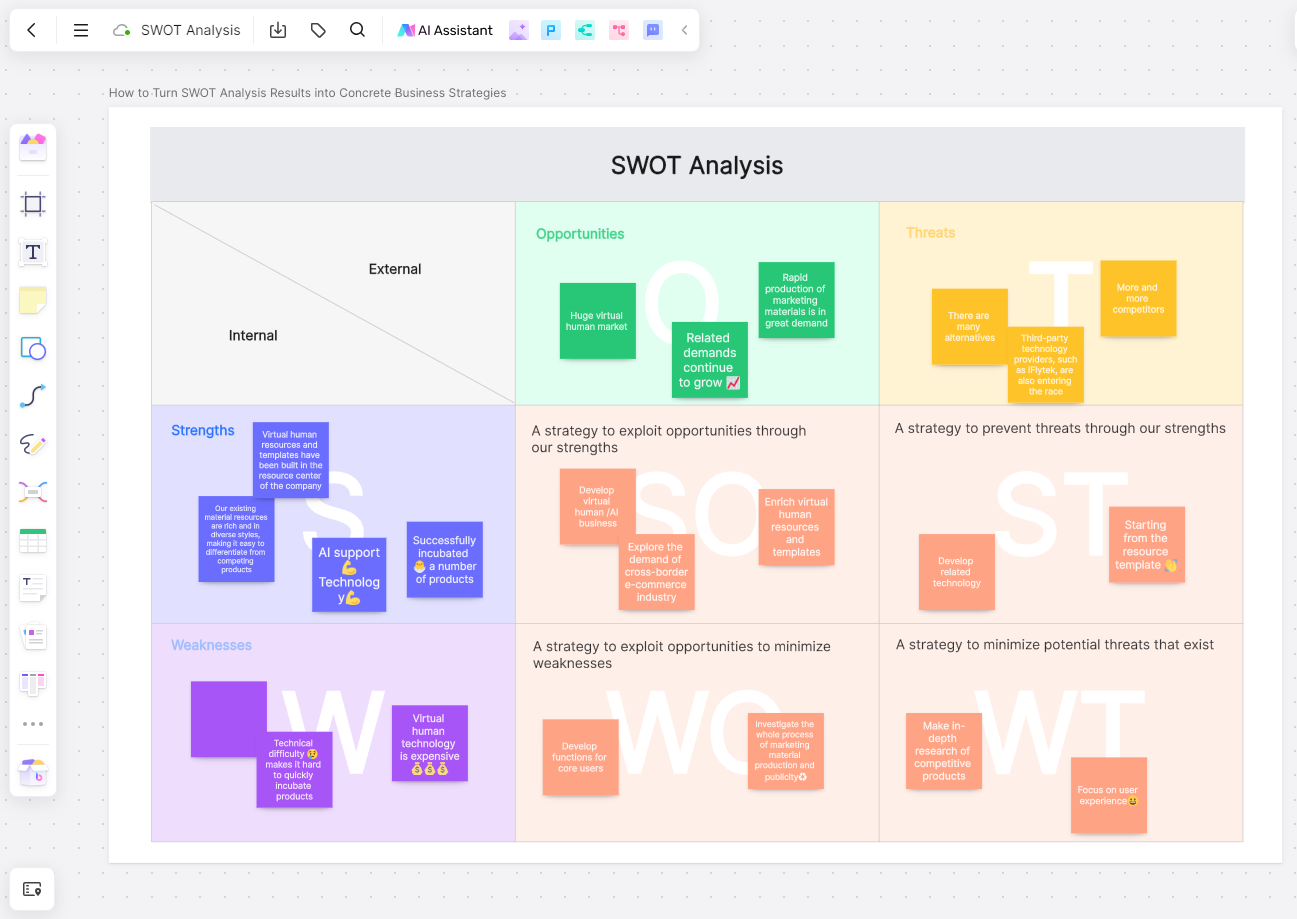
2. Prioritize
Next, prioritize each factor in your SWOT analysis. Figure out what’s most important now and in the future. This helps you focus your energy and resources where they’re needed most.
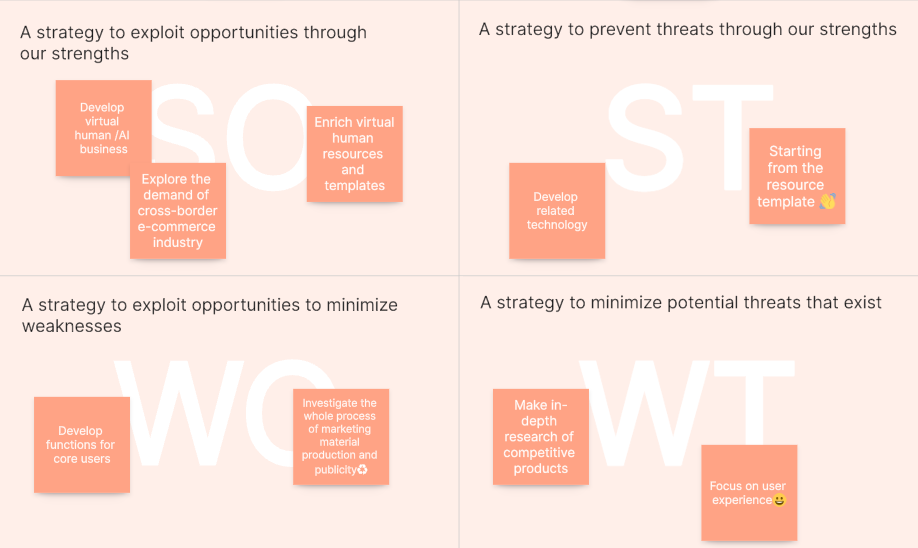
3. Develop Strategic Directions
Based on your SWOT analysis, determine your company’s strategic direction. Here are four basic strategies you can use:
- SO (Strengths-Opportunities): Use your strengths to seize market opportunities.
- ST (Strengths-Threats): Leverage your strengths to counter or mitigate external threats.
- WO (Weaknesses-Opportunities): Improve or eliminate weaknesses to capitalize on opportunities.
- WT (Weaknesses-Threats): Manage weaknesses while avoiding or reducing external threats.
4. Create Specific Action Plans
Now, let’s get into the nitty-gritty: creating specific action plans for each strategic direction. Your plans should include:
- Goals: Clear strategic objectives.
- Actions: Specific steps to achieve these objectives.
- Timeline: A timeframe for completing these actions.
- Resources: What you’ll need to implement the plan, including money, people, and technology.
- Responsibility: Who’s in charge of making sure these plans happen.
5. Evaluate and Adjust
As you implement your strategies, regularly check how well they’re working. Be ready to tweak them based on changes in the market or within your company.
6. Communicate and Execute
Make sure your strategic plans are communicated clearly throughout your organization. Everyone needs to be on the same page and working towards the same goals.
7. Monitor and Gather Feedback
Set up systems to monitor progress and gather feedback. This way, you can make adjustments as needed to stay on track.
8. Continuous Improvement
Treat your SWOT analysis as part of an ongoing improvement process. Update it regularly to reflect changes in the market and business environment.
Example
Imagine a company finds that it has strong R&D capabilities (a strength) but faces intense market competition (a threat). Based on this, the company can adopt the following strategies:
- SO Strategy: Use R&D strengths to develop new products that meet market demand for innovation.
- ST Strategy: Maintain a competitive edge through continuous technological innovation to reduce the threat of competition.

By following these strategies, the company can create specific action plans, such as increasing the R&D budget and enhancing market research, to ensure effective implementation. I hope these steps help you better understand how to turn SWOT analysis into concrete business strategies.
How to Use the SWOT Analysis Model
Here's an example of applying SWOT analysis to a "traditional business transformation" scenario, with guidance on how to use Boardmix online whiteboard for this process.
Step 1: Analyze the Problem
Start by examining the strengths, weaknesses, opportunities, and threats of traditional businesses. Use the Boardmix online whiteboard's "SWOT Analysis Model" template to list all the relevant factors in a clear and organized manner. This approach allows for a targeted analysis of the root causes of issues.

Boardmix offers a variety of standard templates, including mind maps, flowcharts, swimlanes, organizational charts, meeting diagrams, ER diagrams, timelines, and UML diagrams, among others. These templates can be used with a single click. Additionally, there are many community-created templates available for reference, saving time and effort.
Step 2: Develop a Solution
Based on the analysis, you can gain a clearer understanding of the current state of the traditional business. Boardmix's mind map feature can help you plan the implementation path according to the actual situation, enabling you to develop a comprehensive solution.
In summary, SWOT analysis is a valuable method for business competition and strategic analysis. It helps businesses understand themselves better and adapt to external factors. Boardmix's online whiteboard makes it easier for decision-makers to create strategic plans to address specific issues. With a rich selection of pre-built templates, Boardmix can help you manage your business tasks more efficiently.
Key Features of Boardmix Collaborative Whiteboard:
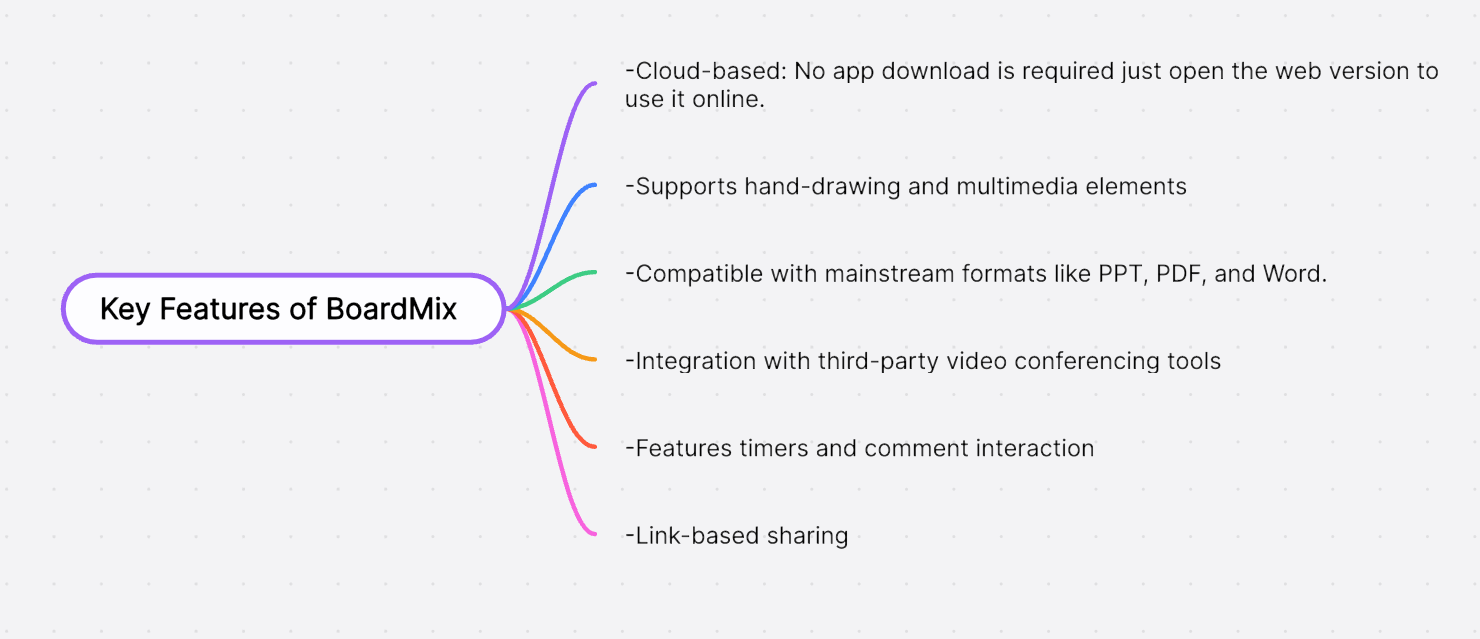
-Cloud-based: No app download is required just open the web version to use it online.
-Supports hand-drawing and multimedia elements, with a rich set of management templates for tracking projects, setting goals, and monitoring progress.
-Compatible with mainstream formats like PPT, PDF, and Word.
-Integration with third-party video conferencing tools such as Tencent Meeting, Lark, DingTalk, Zoom, and WeCom, allowing for real-time communication with remote teams.
-Features timers and comment interaction to enhance online meeting engagement.
-Link-based sharing, allowing one-click sharing of brainstorming documents.
This is a brief introduction to SWOT analysis and the Boardmix online whiteboard tool. With the right approach and efficient tools, everyone can improve their competitiveness, and individual users can access Boardmix for free—click to start using it now!









